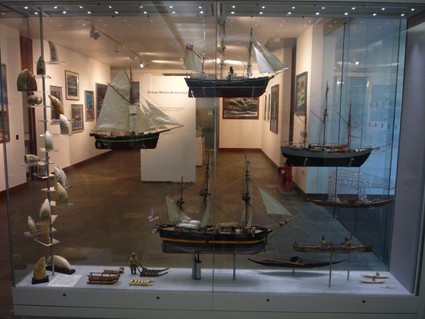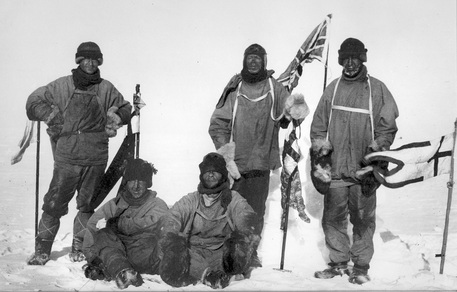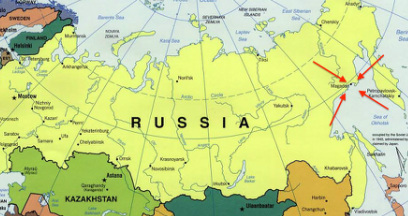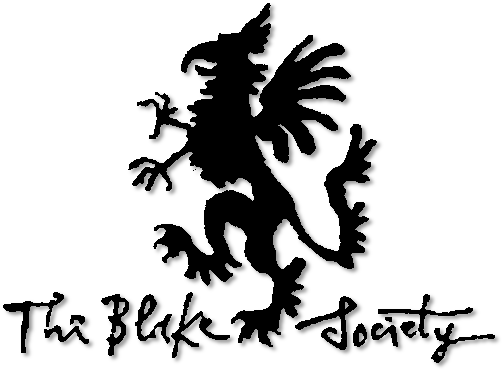 Model ships? Tremendous fun!
Model ships? Tremendous fun! Feel like your Lent has been lacking a bit of culture? Never fear! Quite literally on Downing’s doorstep is the Scott Polar Research Institute – if you live on Lensfield you have absolutely no excuse for not paying it a quick visit.
If time is an issue (and of course it is, that essay crisis Dominos isn’t going to eat itself), the best part about the Institute’s museum is that it is quite small. Unless, like myself, your museum-going pace is glacial (first terrible polar joke), the whole thing won’t take more than thirty minutes.
The permanent collection is divided mainly geographically, but covers a range of different disciplines. There’s some interesting work on climate change and the cryosphere (and other, longer words) if science is your bag. Of course, dear Blakelings, science is unlikely to be your bag, but if graphs aren’t doing it for you there’s some really wonderful information on the indigenous art and ways of life that developed in the hostile environment of the Arctic circle.
If time is an issue (and of course it is, that essay crisis Dominos isn’t going to eat itself), the best part about the Institute’s museum is that it is quite small. Unless, like myself, your museum-going pace is glacial (first terrible polar joke), the whole thing won’t take more than thirty minutes.
The permanent collection is divided mainly geographically, but covers a range of different disciplines. There’s some interesting work on climate change and the cryosphere (and other, longer words) if science is your bag. Of course, dear Blakelings, science is unlikely to be your bag, but if graphs aren’t doing it for you there’s some really wonderful information on the indigenous art and ways of life that developed in the hostile environment of the Arctic circle.
 Scott's team were beaten to the South Pole by Roald Amundsen of Norway a mere 34 days earlier
Scott's team were beaten to the South Pole by Roald Amundsen of Norway a mere 34 days earlier Britain’s role in our understanding of the Arctic and Antarctic is also closely examined. The history of polar exploration is fascinating and dramatic; Antarctica was considered uncharted until Scott’s early 20th Century expeditions, culminating in the death of his entire expedition in the return journey from the South Pole. The final expedition was largely publicly funded, the danger and romance of polar exploration capturing the Edwardian public’s imagination. There are explanations of how Antarctic explorers dealt, or hoped to deal, with the extreme conditions, and artefacts recovered from Scott’s perfectly preserved final camp.
The quest for the Northwest Passage has also well documented in the exhibits. Although they ultimately failed, British naval heroes spent years attempting to find quicker trading routes around the impossible-to-navigate northern coast of Canada. There is special attention paid to Sir John Franklin’s party; missing for years before their bodies were found, their exact cause of death is considered unresolved.
The quest for the Northwest Passage has also well documented in the exhibits. Although they ultimately failed, British naval heroes spent years attempting to find quicker trading routes around the impossible-to-navigate northern coast of Canada. There is special attention paid to Sir John Franklin’s party; missing for years before their bodies were found, their exact cause of death is considered unresolved.

Currently there is a special exhibition on Magadan, a I learnt last term that the Chukchi tribe of North-eastern Siberia, in an attempt to preserve their language in the face of an onslaught of modern terminology, invented a word for ‘watch’ which translates to ‘hammering heart’. This surprisingly poetic and slightly useless fact was all I knew about the people of this cold, distant piece of Russia. With that in mind, I thought, ‘Better get myself to this exhibition at the Scott Polar Research Institute, then.’ And I learnt somewhat more than how to say wristwatch in an obscure Siberian dialect.
Although quite small, the exhibition packs a lot of Russian history into one room. Photographs of the region, especially its people form the bulk of the material on display, and give a visual sense of the cultural history of Magadan. Personally I found the objects in the exhibition even more interesting. Soviet-era children’s toys and a medal for mothers who raised 8 children are displayed alongside each other. One quite horrifying aspect of Magadan’s own recent history is the fact that the area was also home to one of the largest Gulags during Stalin’s rule. Gulags were forced labour camps, home to everyone from criminals to political activists, where conditions were dreadful and 16-hour shifts of manual labour were enforced. Next to a photograph of a pile of innumerable shoes, left outside the main building after the Gulag was shut down, was a single shoe. It was surprisingly moving to see this physical evidence of the hundreds of thousands of people put to work in this isolated community in Siberia.
The Magadan exhibition runs until the 15th of February; but even if you don’t make it in time to see that, the Institute is well worth a quick visit – go on, it’s just across the road.
Although quite small, the exhibition packs a lot of Russian history into one room. Photographs of the region, especially its people form the bulk of the material on display, and give a visual sense of the cultural history of Magadan. Personally I found the objects in the exhibition even more interesting. Soviet-era children’s toys and a medal for mothers who raised 8 children are displayed alongside each other. One quite horrifying aspect of Magadan’s own recent history is the fact that the area was also home to one of the largest Gulags during Stalin’s rule. Gulags were forced labour camps, home to everyone from criminals to political activists, where conditions were dreadful and 16-hour shifts of manual labour were enforced. Next to a photograph of a pile of innumerable shoes, left outside the main building after the Gulag was shut down, was a single shoe. It was surprisingly moving to see this physical evidence of the hundreds of thousands of people put to work in this isolated community in Siberia.
The Magadan exhibition runs until the 15th of February; but even if you don’t make it in time to see that, the Institute is well worth a quick visit – go on, it’s just across the road.


